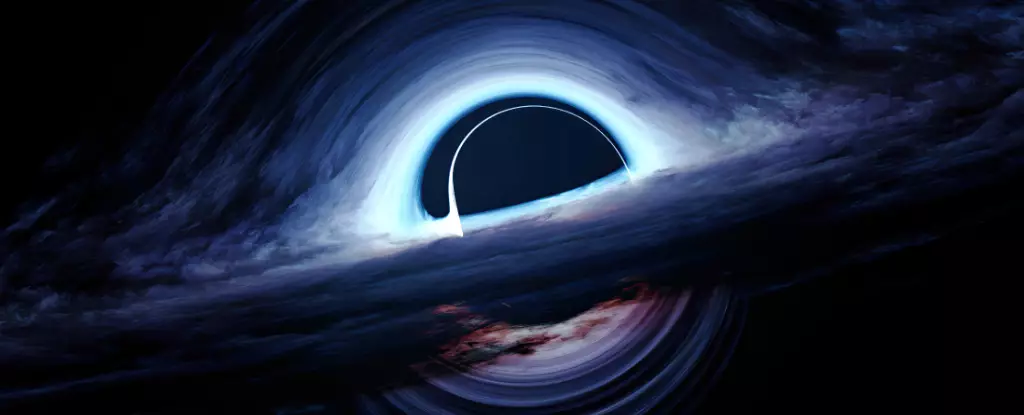Supermassive black holes (SMBHs) represent some of the most awe-inspiring yet terrifying entities in the cosmos, boasting masses that can reach upwards of a billion solar masses. Their presence is not just a mystery but poses profound questions regarding the early universe. Observations indicate that these behemoths existed when the universe was still a mere infant, less than a billion years old. Luminous counterparts known as quasars, characterized by the intense radiation emitted as these black holes consume surrounding matter, provide pivotal clues to their existence and growth dynamics.
However, the scientific community faces a formidable enigma: how could such massive entities form in such a relatively short timeframe? The process known as accretion—the gradual accumulation of material around a black hole—plays a crucial role in their expansion, allowing them to emit copious amounts of radiant energy. Yet, this process also imposes significant limitations on the growth rate of black holes. Therefore, a paradox emerges: to account for the early detection of massive quasars, scientists propose that these black holes either matured at an extraordinary speed or were born as colossal entities far larger than conventional theories suggest.
Several theories have emerged to explain the formation of these primordial giants. One hypothesis posits the existence of primordial black holes formed shortly after the Big Bang. While this notion may hold validity for smaller black holes, the standard cosmological model suggests that the universe wouldn’t have produced a sufficient quantity of massive black holes in this manner.
Another commonly accepted formation method involves the demise of massive stars, whose explosive ends can give rise to stellar-mass black holes. These black holes, if formed within densely packed star clusters, can merge rapidly, enhancing their growth. This concept of “stellar mass seeds” growing swiftly is vital; however, it remains insufficient alone to explain the significant population of massive black holes observed in ancient galaxies.
An alternative pathway for black hole creation involves the concept of “heavy seeds,” which presents a more viable explanation for the formation of supermassive black holes. A direct collapse scenario could allow gas clouds, unable to ignite into stars due to the surrounding radiation, to instead collapse into massive black holes. This remains a contentious point, as only a fraction of dark matter halos can grow sufficiently to facilitate this type of collapse, raising questions about the overall rarity of these early black holes.
For years, astronomers have cultivated knowledge regarding the number of galaxies that existed during the cosmos’ infancy. However, identifying black holes within these ancient structures proved exceptionally challenging, primarily because only luminous quasars were detectable. Recent groundbreaking studies shed light on the abundance of black holes, suggesting that they inhabit many more ordinary galaxies than previously thought.
With advancements in observational technology, particularly the James Webb Space Telescope (JWST), research has yielded surprising insights into the cosmos’ early epochs. The JWST’s exceptional sensitivity enables it to monitor brightness fluctuations of distant quasars over prolonged periods, leading to more accurate estimates of black hole populations. What emerges is a more intricate picture that challenges preconceived ideas about the number of SMBHs formed through mechanisms like direct collapse.
Dark Stars: A New Frontier
Interestingly, an innovative theory has emerged that comprises a hybrid of conventional stellar formation processes and primordial black hole origination. This framework posits that during the gravitational contraction of gas clouds, significant amounts of dark matter could be captured, altering the internal structure of these forming stars. The growth of these “dark stars” might continue significantly longer than that of normal stars, ultimately collapsing under the tug of gravity to form massive black holes.
This hypothesis is especially tantalizing as it suggests a potential pathway for the prolific formation of black holes within the early universe. But like their counterparts, dark stars cannot resist gravitational collapse indefinitely, which means their fates remain entwined with the inevitable formation of black holes.
The Future of Black Hole Research
The field of black hole formation is undergoing rapid evolution. With an array of upcoming observational missions, including the Euclid mission and the Nancy Grace Roman Space Telescope, astronomers anticipate a refined understanding of black hole demographics in the early universe. The JWST will play a pivotal role in this endeavor by providing nearly unparalleled capabilities for detecting faint quasar activity.
In the coming years, researchers hope to witness the early formation processes of black holes in real-time, potentially observing the notable explosions that accompany the collapse of the universe’s first stars. The models suggest this is within reach but will require cohesive collaboration across the astronomical community.
While significant strides have been made in understanding black hole formation, many facets remain enigmatic. The journey to uncover the mystery of these cosmic giants is merely at its inception, with new observations set to propel the field into groundbreaking territory.


Leave a Reply